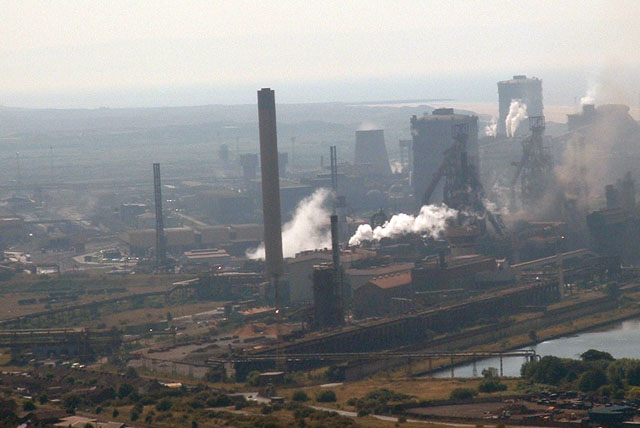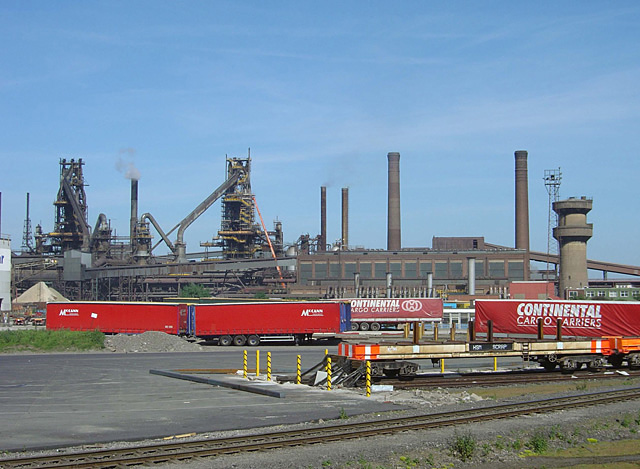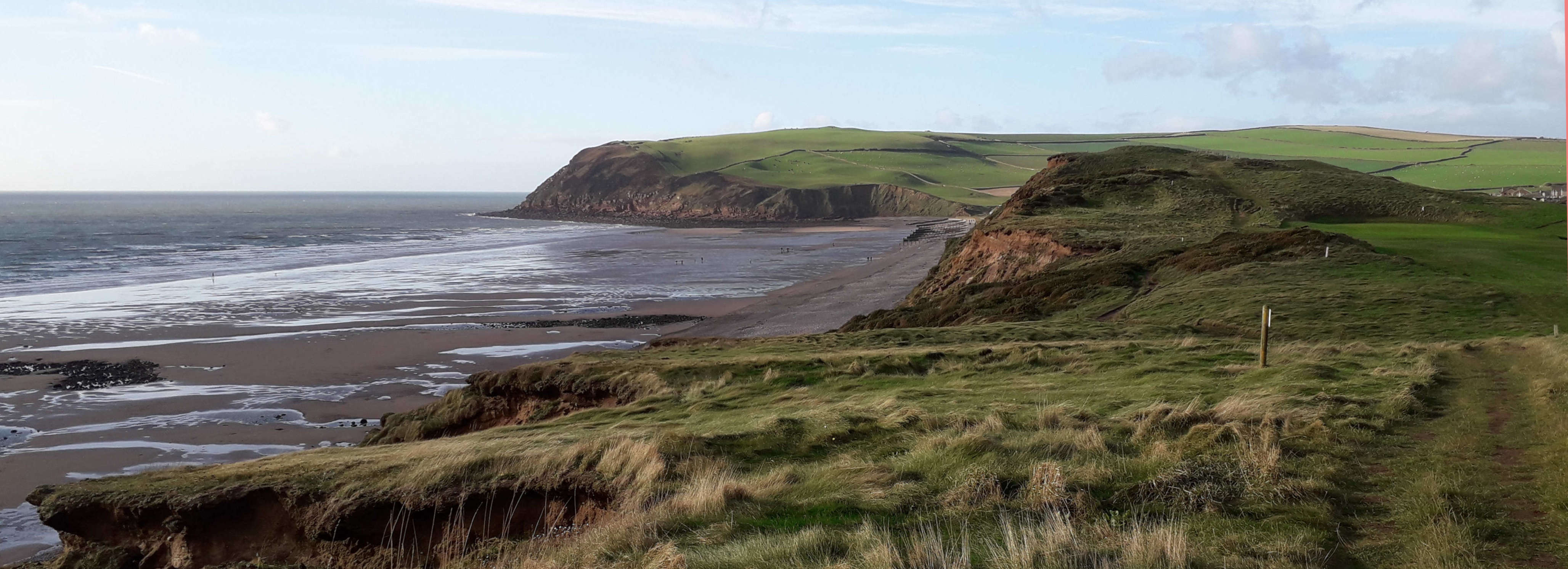|
Haig Colliery
Haig Colliery was a coal mine in Whitehaven, Cumbria, in north-west England. The mine was in operation for almost 70 years and produced anthracitic coal which is most useful for coking coal. Situated on the coast, the underground workings of the mine spread westwards out under the Irish Sea and mining was undertaken at over out underneath the sea bed. History The mine was sunk in 1914 with production not starting until 1916, and full production not starting until 1925. The mine was named after Douglas Haig, the First World War commander. This followed a typical pattern of naming pits after famous figures of the day in Cumbria (Ladysmith after the battle and Wellington after the former Prime Minister). The colliery was connected to Wellington Colliery in 1922 and the two mines worked in conjunction with each other until Wellington closed in 1932. Initially Haig was operated by the Bord and pillar method, with Longwall mining taking over from the late 1930s. Operations The mi ... [...More Info...] [...Related Items...] OR: [Wikipedia] [Google] [Baidu] |
Whitehaven
Whitehaven is a town and port on the English north west coast and near to the Lake District National Park in Cumbria, England. Historically in Cumberland, it lies by road south-west of Carlisle and to the north of Barrow-in-Furness. It is the administrative seat of the Borough of Copeland, and has a town council for the parish of Whitehaven. The population of the town was 23,986 at the 2011 census. The town's growth was largely due to the exploitation of the extensive coal measures by the Lowther family, driving a growing export of coal through the harbour from the 17th century onwards. It was also a major port for trading with the American colonies, and was, after London, the second busiest port of England by tonnage from 1750 to 1772. This prosperity led to the creation of a Georgian planned town in the 18th century which has left an architectural legacy of over 170 listed buildings. Whitehaven has been designated a "gem town" by the Council for British Archaeology due to ... [...More Info...] [...Related Items...] OR: [Wikipedia] [Google] [Baidu] |
National Coal Board
The National Coal Board (NCB) was the statutory corporation created to run the nationalised coal mining industry in the United Kingdom. Set up under the Coal Industry Nationalisation Act 1946, it took over the United Kingdom's collieries on "vesting day", 1 January 1947. In 1987, the NCB was renamed the British Coal Corporation, and its assets were subsequently privatised. Background Collieries were taken under government control during the First and Second World Wars. The Sankey Commission in 1919 gave R. H. Tawney, Sidney Webb and Sir Leo Chiozza Money the opportunity to advocate nationalisation, but it was rejected. Coal reserves were nationalised during the war in 1942 and placed under the control of the Coal Commission, but the mining industry remained in private hands. At the time, many coal companies were small, although some consolidation had taken place in the years before the war. Formation and organisation The NCB was one of a number of public corporations cr ... [...More Info...] [...Related Items...] OR: [Wikipedia] [Google] [Baidu] |
Coal Mining Disasters In England
Coal is a combustible black or brownish-black sedimentary rock, formed as stratum, rock strata called coal seams. Coal is mostly carbon with variable amounts of other Chemical element, elements, chiefly hydrogen, sulfur, oxygen, and nitrogen. Coal is formed when dead plant matter decays into peat and is converted into coal by the heat and pressure of deep burial over millions of years. Vast deposits of coal originate in former wetlands called coal forests that covered much of the Earth's tropical land areas during the late Carboniferous (Pennsylvanian (geology), Pennsylvanian) and Permian times. Many significant coal deposits are younger than this and originate from the Mesozoic and Cenozoic eras. Coal is used primarily as a fuel. While coal has been known and used for thousands of years, its usage was limited until the Industrial Revolution. With the invention of the steam engine, coal consumption increased. In 2020, coal supplied about a quarter of the world's primary energ ... [...More Info...] [...Related Items...] OR: [Wikipedia] [Google] [Baidu] |
1922 Mining Disasters
Nineteen or 19 may refer to: * 19 (number), the natural number following 18 and preceding 20 * one of the years 19 BC, AD 19, 1919, 2019 Films * ''19'' (film), a 2001 Japanese film * ''Nineteen'' (film), a 1987 science fiction film Music * 19 (band), a Japanese pop music duo Albums * ''19'' (Adele album), 2008 * ''19'', a 2003 album by Alsou * ''19'', a 2006 album by Evan Yo * ''19'', a 2018 album by MHD * ''19'', one half of the double album ''63/19'' by Kool A.D. * ''Number Nineteen'', a 1971 album by American jazz pianist Mal Waldron * ''XIX'' (EP), a 2019 EP by 1the9 Songs * "19" (song), a 1985 song by British musician Paul Hardcastle. * "Nineteen", a song by Bad4Good from the 1992 album ''Refugee'' * "Nineteen", a song by Karma to Burn from the 2001 album ''Almost Heathen''. * "Nineteen" (song), a 2007 song by American singer Billy Ray Cyrus. * "Nineteen", a song by Tegan and Sara from the 2007 album '' The Con''. * "XIX" (song), a 2014 song by Slipknot. ... [...More Info...] [...Related Items...] OR: [Wikipedia] [Google] [Baidu] |
Port Talbot Steelworks
Port Talbot Steelworks is an integrated steel production plant in Port Talbot, West Glamorgan, Wales, capable of producing nearly 5 million tonnes of steel slab per annum. This makes it the larger of the two major steel plants in the UK and one of the largest in Europe. Over 4,000 people work at the plant. The majority of the slab is rolled on-site at Port Talbot and at the Newport Llanwern site to make a variety of steel strip products. The remainder is processed at other Tata Steel plants or sold in slab form. The works covers a large area of land which dominates the south of the town. Its two blast furnaces and steel production plant buildings are major landmarks visible from both the M4 motorway and the South Wales Main Line when passing through the town. History The site at Margam is made up of a number of plants across a large site, developed since 1901. Port Talbot works The original works were built by Gilbertson, and situated south of Port Talbot railway station. Cons ... [...More Info...] [...Related Items...] OR: [Wikipedia] [Google] [Baidu] |
Scunthorpe Steelworks
The Iron and Steel Industry in Scunthorpe was established in the mid 19th century, following the discovery and exploitation of middle Lias ironstone east of Scunthorpe, Lincolnshire, England. Initially iron ore was exported to iron producers in South Yorkshire. Later, after the construction of the Trent, Ancholme and Grimsby Railway (1860s) gave rail access to the area local iron production rapidly expanded using local ironstone and imported coal or coke. The local ore was relatively poor in iron (around 25% average) and high in lime ( CaCO3) requiring co-smelting with more acidic silicious iron ores. The growth of industry in the area led to the development of the town of Scunthorpe in a formerly sparsely populated entirely agricultural area. From the early 1910s to the 1930s the industry consolidated, with three main ownership concerns formed – the ''Appleby-Frodingham Steel Company'', part of the United Steel Companies; the ''Redbourn Iron Works'', part of Richard ... [...More Info...] [...Related Items...] OR: [Wikipedia] [Google] [Baidu] |
Redcar
Redcar is a seaside town on the Yorkshire Coast in the Redcar and Cleveland unitary authority in the county of North Yorkshire, England. It is located east of Middlesbrough. The Teesside built-up area's Redcar subdivision had a population of 37,073 at the 2011 UK Census, 2011 Census. The town is made up of Coatham, Dormanstown, Kirkleatham, Newcomen, West Dyke, Wheatlands and Zetland. It gained a town charter in 1922, from then until 1968 it was governed by the municipal borough of Redcar. Since the abolition of County Borough of Teesside, which existed from 1968 until 1974, the town has been Unparished area, unparished. History Origins Redcar occupies a low-lying site by the sea; the second element of its name is from Old Norse ''kjarr'', meaning 'marsh', and the first may be either Old English (Anglo-Saxon) ''rēad'' meaning 'red' or OE ''hrēod'' 'reed'. The town originated as a fishing hamlet in the 14th century, trading with the larger adjacent hamlet of Coatham ... [...More Info...] [...Related Items...] OR: [Wikipedia] [Google] [Baidu] |
Cumbrian Coast Line
The Cumbrian Coast line is a rail route in North West England, running from Carlisle to Barrow-in-Furness via Workington and Whitehaven. The line forms part of Network Rail route NW 4033, which continues (as the Furness line) via Ulverston and Grange-over-Sands to Carnforth, where it connects with the West Coast Main Line. History George Stephenson favoured, and carried out preliminary surveys for, a scheme to link England and Scotland by a railway running along the coast between Lancaster and Carlisle, but this 'Grand Caledonian Junction Railway' was never built, the direct route over Shap being preferred. Consequently, the line along the Cumbrian coast is the result of piecemeal railway building (largely to serve local needs) by a number of different companies: Maryport and Carlisle Railway Carlisle to Maryport Promoted to link with Newcastle and Carlisle Railway to give "one complete and continuous line of communication from the German Ocean to the Irish Sea" and to op ... [...More Info...] [...Related Items...] OR: [Wikipedia] [Google] [Baidu] |
Woodhouse Colliery
Woodhouse Colliery, also known as Whitehaven coal mine, is a proposed coal mine near to Whitehaven in Cumbria, England. The proposal is for the first deep coal mine in England since Asfordby pit in 1986. The coal mine has been advertised as bringing jobs to a deprived area but has also come in for criticism by green campaigners. In 2019, Cumbria County Council granted the planning permission for the venture. It is not to be confused with the former Woodhouse Close Colliery in Woodhouse Close, Bishop Auckland (County Durham) which operated between 1835 and 1934. The colliery would be the first new deep coal mine in the United Kingdom in 30 years. The mine is proposed by West Cumbria Mining and plans to extract coking coal from beneath the Irish Sea for 25 years. The plan has been criticised by some MPs, scientists and environmentalists due to the coal mine's environmental impact and compromising the UK government's legal commitments to reduce UK carbon emissions. History ... [...More Info...] [...Related Items...] OR: [Wikipedia] [Google] [Baidu] |
Haig Colliery Mining Museum
Haig Colliery Mining Museum was a visitor attraction in Kells, on the site of Cumbria's last deep coal mine on the cliffs above Whitehaven in Cumbria, England. It closed in January 2016 due to insolvency. History The museum was an independent, volunteer-led project to provide a permanent archive of the local mining history and community resource within the remaining winding engine house, which became a scheduled monument in 1998. One of the two massive steam winding engines had been returned to working order, and many artifacts were on permanent display to help describe the life of the local miners and the social history of the area. Coal mining in Whitehaven dates back to the 13th century when the monks from St Bees Priory supervised the opening of coal mines at Arrowthwaite. This long history ended abruptly in March 1986, when Haig Colliery, Cumbria's last deep coal mine, finally closed. During this time, the gassy nature of the mines caused numerous violent explosions. Ov ... [...More Info...] [...Related Items...] OR: [Wikipedia] [Google] [Baidu] |
St Bees Head
St Bees Head is a headland on the North West coast of the English county of Cumbria and is named after the nearby village of St Bees. It is the only stretch of Heritage Coast on the English coastline between the Welsh and Scottish borders, and is a Site of Special Scientific Interest. The sea off the Head is protected as part of the Cumbria Coast, Cumbria Coast Marine Conservation Zone. It lies on two long-distance footpaths, the Cumbria Coastal Way and Alfred Wainwright's Coast to Coast Walk. Both long-distance footpaths follow the edge of the cliffs, which rise to 90 metres above sea level and have views of the Cumbrian mountains and coast. North Head The true geographical head is the North Head, which is the most westerly point of Northern England and is the site of St Bees Lighthouse. During WW2 a radar station was operated from here, and some of the buildings can still be seen adjacent to the lighthouse. The foghorn building is to the west of the lighthouse, but is now d ... [...More Info...] [...Related Items...] OR: [Wikipedia] [Google] [Baidu] |
Albright And Wilson
Albright and Wilson was founded in 1856 as a United Kingdom manufacturer of potassium chlorate and white phosphorus for the match industry. For much of its first 100 years of existence, phosphorus-derived chemicals formed the majority of its products. It was set up as a partnership between two Quakers, Arthur Albright, and John Edward Wilson. It became a private limited company, Albright & Wilson Ltd, in 1892; and it remained a double family-owned firm, for nearly 100 years, until 5 March 1948, when it became a public company.Threlfall (1951). Chapter XIV: ''The Public Company.'' Albright and Wilson expanded considerably into silicones, detergents, food additives, metal finishing chemicals, strontium based chemicals and chromium based chemicals. It was the second largest chemical manufacturer in the United Kingdom; although it was always very much smaller than ICI. In 1971 Tenneco bought a part of Albright and Wilson's share holdings; and in 1978 obtained full ownership. In the ... [...More Info...] [...Related Items...] OR: [Wikipedia] [Google] [Baidu] |






